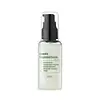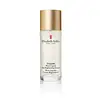What's inside
What's inside
 Key Ingredients
Key Ingredients

 Benefits
Benefits

 Ingredients Side-by-side
Ingredients Side-by-side

Centella Asiatica Extract 49%
CleansingWater
Skin ConditioningGlycerin
HumectantDipropylene Glycol
HumectantNiacinamide
SmoothingButylene Glycol
Humectant1,2-Hexanediol
Skin ConditioningGlycereth-26
HumectantCeramide NP
Skin ConditioningSodium Hyaluronate
HumectantAsiaticoside
AntioxidantAsiatic Acid
Skin ConditioningMadecassic Acid
Skin ConditioningPalmitoyl Hexapeptide-12
Skin ConditioningPalmitoyl Tripeptide-1
Skin ConditioningPalmitoyl Tetrapeptide-7
Skin ConditioningPalmitoyl Dipeptide-10
Skin ConditioningCarbomer
Emulsion StabilisingArginine
MaskingSclerotium Gum
Emulsion StabilisingHydrolyzed Jojoba Esters
Skin ConditioningCaprylyl Glycol
EmollientPolyglyceryl-10 Myristate
Skin ConditioningPanthenol
Skin ConditioningPolyglyceryl-10 Laurate
Skin ConditioningHydrogenated Lecithin
EmulsifyingCamellia Sinensis Leaf Extract
AntimicrobialPancratium Maritimum Extract
BleachingDipotassium Glycyrrhizate
HumectantDisodium EDTA
Adenosine
Skin ConditioningCentella Asiatica Extract 49%, Water, Glycerin, Dipropylene Glycol, Niacinamide, Butylene Glycol, 1,2-Hexanediol, Glycereth-26, Ceramide NP, Sodium Hyaluronate, Asiaticoside, Asiatic Acid, Madecassic Acid, Palmitoyl Hexapeptide-12, Palmitoyl Tripeptide-1, Palmitoyl Tetrapeptide-7, Palmitoyl Dipeptide-10, Carbomer, Arginine, Sclerotium Gum, Hydrolyzed Jojoba Esters, Caprylyl Glycol, Polyglyceryl-10 Myristate, Panthenol, Polyglyceryl-10 Laurate, Hydrogenated Lecithin, Camellia Sinensis Leaf Extract, Pancratium Maritimum Extract, Dipotassium Glycyrrhizate, Disodium EDTA, Adenosine
Water
Skin ConditioningPropanediol
SolventButylene Glycol
HumectantPentylene Glycol
Skin ConditioningGlycerin
HumectantIsononyl Isononanoate
EmollientAlcaligenes Polysaccharides
EmollientAmodimethicone
Calanthe Discolor Extract
Skin ConditioningCalcium Gluconate
HumectantCamellia Japonica Seed Oil
EmollientCandida Bombicola/Glucose/Methyl Rapeseedate Ferment
AntimicrobialCaprylic/Capric Triglyceride
MaskingCarbomer
Emulsion StabilisingCastor Oil/Ipdi Copolymer
Disodium EDTA
Gluconolactone
Skin ConditioningLimnanthes Alba Seed Oil
Skin ConditioningMaltodextrin
AbsorbentMaris Sal
Skin ConditioningOphiopogon Japonicus Root Extract
Skin ConditioningPolyacrylate Crosspolymer-6
Emulsion StabilisingSodium Carrageenan
Emulsion StabilisingSodium Hydroxide
BufferingTocopherol
AntioxidantXanthan Gum
EmulsifyingChlorphenesin
AntimicrobialPhenoxyethanol
PreservativeWater, Propanediol, Butylene Glycol, Pentylene Glycol, Glycerin, Isononyl Isononanoate, Alcaligenes Polysaccharides, Amodimethicone, Calanthe Discolor Extract, Calcium Gluconate, Camellia Japonica Seed Oil, Candida Bombicola/Glucose/Methyl Rapeseedate Ferment, Caprylic/Capric Triglyceride, Carbomer, Castor Oil/Ipdi Copolymer, Disodium EDTA, Gluconolactone, Limnanthes Alba Seed Oil, Maltodextrin, Maris Sal, Ophiopogon Japonicus Root Extract, Polyacrylate Crosspolymer-6, Sodium Carrageenan, Sodium Hydroxide, Tocopherol, Xanthan Gum, Chlorphenesin, Phenoxyethanol
 Reviews
Reviews

Ingredients Explained
These ingredients are found in both products.
Ingredients higher up in an ingredient list are typically present in a larger amount.
Butylene Glycol (or BG) is used within cosmetic products for a few different reasons:
Overall, Butylene Glycol is a safe and well-rounded ingredient that works well with other ingredients.
Though this ingredient works well with most skin types, some people with sensitive skin may experience a reaction such as allergic rashes, closed comedones, or itchiness.
Learn more about Butylene GlycolCarbomer is a polymer of acrylic acid. Its main role is to create a gel consistency.
A high amount of carbomer can cause pilling or balling up of products. Don't worry, most products contain 1% or less of carbomer.
Disodium EDTA plays a role in making products more stable by aiding other preservatives.
It is a chelating agent, meaning it neutralizes metal ions that may be found in a product.
Disodium EDTA is a salt of edetic acid and is found to be safe in cosmetic ingredients.
Learn more about Disodium EDTAGlycerin is already naturally found in your skin. It helps moisturize and protect your skin.
A study from 2016 found glycerin to be more effective as a humectant than AHAs and hyaluronic acid.
As a humectant, it helps the skin stay hydrated by pulling moisture to your skin. The low molecular weight of glycerin allows it to pull moisture into the deeper layers of your skin.
Hydrated skin improves your skin barrier; Your skin barrier helps protect against irritants and bacteria.
Glycerin has also been found to have antimicrobial and antiviral properties. Due to these properties, glycerin is often used in wound and burn treatments.
In cosmetics, glycerin is usually derived from plants such as soybean or palm. However, it can also be sourced from animals, such as tallow or animal fat.
This ingredient is organic, colorless, odorless, and non-toxic.
Glycerin is the name for this ingredient in American English. British English uses Glycerol/Glycerine.
Learn more about GlycerinWater. It's the most common cosmetic ingredient of all. You'll usually see it at the top of ingredient lists, meaning that it makes up the largest part of the product.
So why is it so popular? Water most often acts as a solvent - this means that it helps dissolve other ingredients into the formulation.
You'll also recognize water as that liquid we all need to stay alive. If you see this, drink a glass of water. Stay hydrated!
Learn more about Water